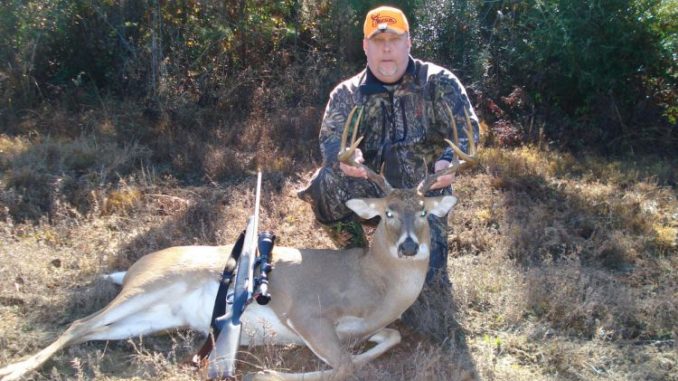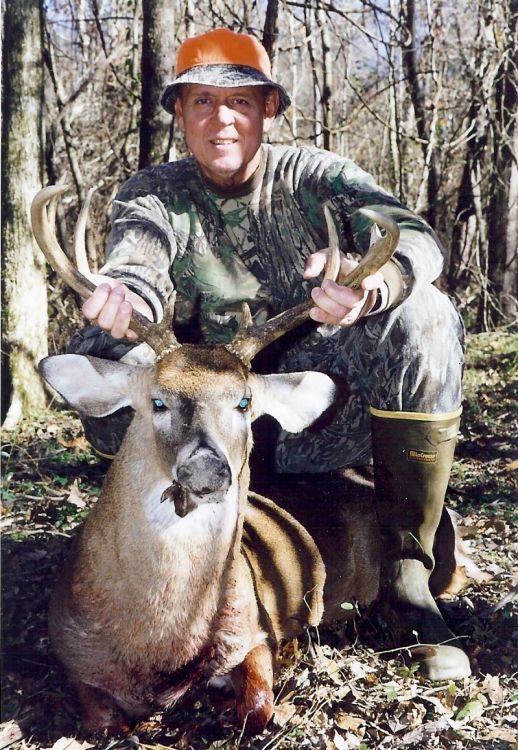
Proven tips from experienced hunters to prevent your scent from getting to a buck before you do.
There’s virtually no lengths a hunter won’t go to in order to fool a whitetail’s incredible nose. I’ve heard of guys dousing themselves with deer urine or rolling around in the dirt before a hunt — rituals they swear by, with big bucks hanging on the wall to back it up. To non-hunters it might seem like borderline insanity, but to anyone who has spent time in a deer stand, it’s just business as usual.
Everyone has their own routines to reduce their scent and lessen the odds of being detected by a deer. Take Warren Womack for example, a 73-year-old hunter from East Feliciana Parish who has religiously used baking soda — a natural odor neutralizer —to help him harvest many of the 378 deer he’s killed since he began recording detailed information about his hunts in the 1970s. To him, reducing scent is the number one factor in being a successful deer hunter.
“When I first started hunting I didn’t have a knowledge base to find out stuff like we do today,” Womack said. “We didn’t have the internet or videos to watch. So the deer taught me what scent control was all about.”
Through his observations as a bowhunter in the 1960s, Womack figured out that a deer would use its sense of smell to avoid humans. He figured something needed to be done to eliminate his odor, and started using baking soda to wash his clothes and rub on his body. Back then, science didn’t have much to say on the biology of a deer’s nose. And still today, we don’t know specific details about how their noses work. But researchers have gathered enough to understand it’s an incredibly complex — and powerful — biological system.
A powerful sense of smell
While you may have heard that a whitetail’s nose is anywhere from 500 to 1,000 times stronger than a human’s, that number is hard to nail down via studies. What we do know is that they have millions of scent receptors that allow them to differentiate between smells and pick up subtleties humans never notice. Deer rely on their noses to evade predators and, coupled with powerful eyesight and hearing, getting close to one can be challenging.
Johnathan Bordelon, deer program manager with the Louisiana Department of Wildlife and Fisheries, said due to a deer’s ability to differentiate smells, it affects how they react to different stimuli. “A deer living in a subdivision may not be necessarily afraid of something like a dog or person,” he said. “They encounter those smells routinely. How they act and behave is influenced on what they have been exposed to. Deer that have been hunted will obviously react differently to a human presence.”
Bordelon said that older deer — especially those that are pressured — rely on wind direction for travel. “The scent left by hunters walking to and from a hunting location may be as much of an issue as the downwind scent hunters emit,” he added.
Tricks of the trade

Scent control starts for Womack before he ever leaves his house with, you guessed it, a box of baking soda. “When you sweat, bacteria grows on your body and produces odor,” he said. “Baking soda is a real good neutralizer.” He said he washes his hunting clothes with baking soda, then transfers them to a bag and sprinkles more baking soda inside before storing the package until he’s ready to hit the woods.
“When I get to the woods, I strip down and take off all of my clothes,” he said. “I get a bowl and sprinkle baking soda in water and get a wash cloth and do a G.I. bath with it—wiping myself completely down. I’d even powder my hair with it. I’ve used so much baking soda years ago — when I had hair — that it would bleach my hair out. It wasn’t real pleasant but it killed odor big time.”
But Womack didn’t stop with baking soda. His pre-hunt ritual wasn’t complete until he built a fire and immersed himself in the smoke. The odor from the smoke, he said, is a scent deer are accustomed to.
“I read about a trapper that used smoke to mask his scent,” he said. “I started raking up leaves and would light them on fire, making a heavy smoke, and squat over it. That first season me and a few friends started doing that, I killed six bucks and three does with a bow in six weeks.”
Lyle Savant hunts highly pressured public land deer in Area 6 inside the Atchafalaya River Basin. The herd, which is acutely aware of human presence during the season, is hard to fool, he said. His routine starts out like Womack’s, with baking soda. “I wash my clothes in baking soda or unscented soap and they go straight in a bag,” he said.
Once he’s in the woods, keeping his scent under control is one of the main things on his mind. “I spray my boots with scent killing spray,” he said. “I’ll bring under arm deodorant so I can freshen up in case I sweat on the way to the stand. Also, I’ll always wear gloves because your hands carry so much scent — and they touch everything. That’s why I won’t touch anything in the woods, because you’re just leaving a marker.”
When Savant gets to his stand, he said he hooks the ground with the heel of his boot and makes a mock scrape, even in the early season before the rut has started. It works as a cover scent. “It exposes the smell of dirt in the air,” he said. “And if I find honey locust nearby, I’ll break them up and rub it on my clothes.”
But even all of that careful preparation and meticulous attention to detail can be squandered if you’re not paying attention to the direction of the wind. Let’s face it, no one will ever completely reduce their odor, no matter the steps you’ve taken. “You’ve always got to check the wind,” said Alan Springer, a hunter from Dry Prong. “We’ve got flagging hanging on limbs at our camp so we can see the wind direction before we hunt. I refuse to press the issue on those warm evening hunts.”
Springer said mornings have rising thermals, which means the wind isn’t blowing parallel to the ground as much as it would be in the afternoon. That’s good news for a hunter because there’s a better chance of your scent being carried high and away from approaching deer.
Savant said he checks the wind direction before he leaves his house and when he parks his boat, ensuring it hasn’t changed. The wind direction dictates where he’ll hunt — and he’s constantly checking it while he’s in the woods. “I have so many waypoints to hunt because it’s all dictated by the wind and your approach,” he said. “You may want to go hunt Stand A but you’ve got to hunt Area B because you can’t get there today because the wind isn’t right. You have to have backup spots.”


